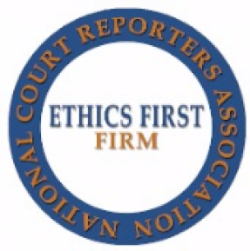Obtain professional trial presentations that enhance your courtroom strategy.
Recognizing Just How Trial Presentations Can Change Your Lawful Method
The integration of trial presentations into lawful approach is significantly recognized as a pivotal element in the court. By using the power of visual narration and multimedia components, attorneys can provide complex details in a way that reverberates with jurors and boosts their understanding.
The Value of Aesthetic Storytelling

Using the power of visual narration can substantially enhance the effectiveness of trial discussions. In the world of lawful proceedings, the capability to share intricate information in an engaging and obtainable fashion is extremely important. Aesthetic narration goes beyond standard spoken communication by incorporating pictures, charts, and video clips to show bottom lines, making the narrative more engaging and less complicated to understand.
Jurors often battle to maintain intricate information provided only through message or speech; however, a well-crafted visual narrative can improve retention and foster a much deeper psychological connection to the case. Visual aids can streamline complex evidence, highlight inconsistencies, and underscore crucial disagreements, thus reinforcing the lawyer's narrative.

Key Aspects of Reliable Presentations
Efficient trial presentations hinge on several key elements that contribute to their general effect and quality. The presentation should adhere to a logical flow, assisting the jury with the facts and arguments in a meaningful way.
Visual aids play an essential function as well. Utilizing graphes, representations, and photos can enhance understanding by illustrating vital principles and proof. These components should be clear and properly made, avoiding unneeded mess that can distract from the message.
One more crucial aspect is the speaker's distribution. Self-confidence, clarity, and interaction are crucial for maintaining the jury's attention. Practicing reliable body movement and singing inflection can substantially enhance the persuasiveness of the discussion.
Leveraging Innovation in the Court
The assimilation of technology in the courtroom has transformed the means legal discussions are conducted, enhancing both performance and understanding. Modern tools such as digital evidence discussion systems enable attorneys to display documents, videos, and images in a clear and well organized manner, assisting in far better understanding amongst jurors. These systems enable real-time comments and zoom features, which can highlight essential facets of evidence that may or else go unnoticed.
Additionally, cloud-based systems offer attorneys the capacity to access situation products remotely, ensuring that they can offer information seamlessly, despite area - trial presentations. Digital displays and projectors have actually changed traditional boards, providing a much more appealing and visually enticing approach for presenting arguments
Making use of trial discussion software application better simplifies the preparation procedure, allowing lawful teams to arrange their materials effectively. This technology promotes cooperation among group members, making sure that all aspects of the instance are addressed thoroughly.
Inevitably, leveraging innovation in the court not only boosts the presentation of evidence yet additionally supports a more convincing narrative, allowing lawyers to connect their debates successfully and strategically. Embracing these technologies is necessary for lawyers intending to elevate their court room presence and accomplish favorable outcomes.
Involving Jurors Through Multimedia
Multimedia discussions work as a powerful device for engaging jurors, changing traditional court dynamics right into even more interactive and engaging experiences. By including aesthetic components such as video clips, animations, and infographics, lawful professionals can catch jurors' interest and enhance their understanding of intricate information. Aesthetic help not just streamline complex legal principles however likewise evoke emotions, making the instance a lot more relatable and memorable.
Making use of multimedia aligns with exactly how people naturally refine details today, where aesthetic stimuli dominate communication. Jurors often keep details better when it is presented in a look here visually engaging format, assisting in improved recollection throughout considerations. Reliable multimedia presentations can highlight vital evidence, display timelines, and present witness statements in a format that reverberates with jurors, fostering much deeper links to the instance.
Additionally, multimedia can assist preserve jurors' focus, lowering the chance of disengagement during prolonged trial proceedings. By damaging the uniformity of typical verbal presentations, lawyers can create a dynamic story that holds jurors' rate of interest. Eventually, leveraging multimedia not just enhances understanding however can likewise influence jurors' assumptions and choices, making it an important asset in modern-day legal approaches.
Methods for Crafting Engaging Stories
Crafting engaging stories is vital for attorneys seeking to reverberate with jurors and convey their why not try these out case efficiently. A well-structured story not only captures attention yet likewise facilitates understanding and retention of crucial facts.
To create an effective narrative, attorneys need to start by recognizing the core theme of their case. This main theme needs to reflect the emotional and accurate heart of the issue, leading the story throughout the test. Next off, lawyers must consider their audience-- jurors who might not have legal expertise. Simplifying complicated legal terminology right into relatable language can link this void - trial presentations.
Integrating character-driven storytelling is additionally essential. Jurors link with individuals as opposed to abstract concepts, so providing an engaging lead character-- be it the client or a victim-- can stimulate compassion. Furthermore, making use of a chronological structure aids keep clearness, enabling jurors to adhere to the narrative effortlessly.
Aesthetic aids, when used purposefully, can enhance narration by illustrating essential points and reinforcing the story's emotional influence. Eventually, an engaging story not only educates however also convinces, making it a critical aspect in a lawyer's trial approach. Crafting such narratives his explanation calls for careful preparation and an understanding of the juror's perspective, making certain the instance reverberates on a human degree.

Conclusion
Finally, trial presentations represent a pivotal element in modern lawful method, enhancing the performance of communication within the courtroom. By using visual storytelling and incorporating multimedia aspects, lawyers can simplify complex info and engage jurors on an emotional level. The tactical use technology additional magnifies the influence of presentations, promoting the retention of crucial disagreements. Ultimately, the cautious construction of stories incorporated with powerful visuals substantially strengthens situations and boosts the possibility of positive end results in lawsuits.